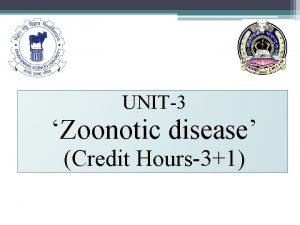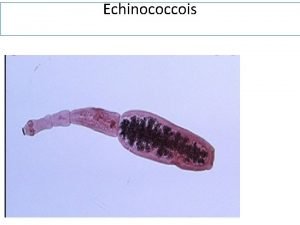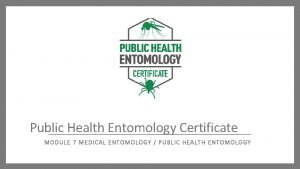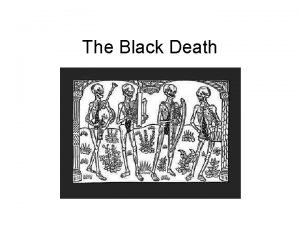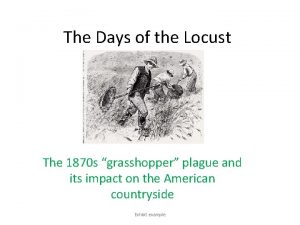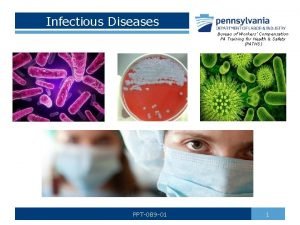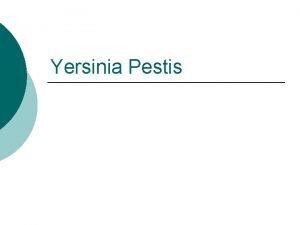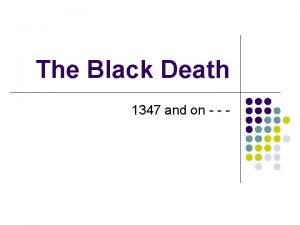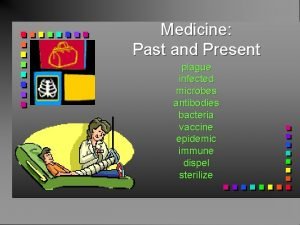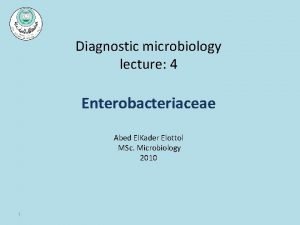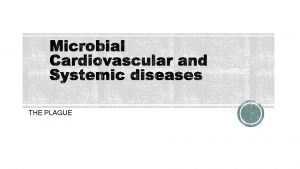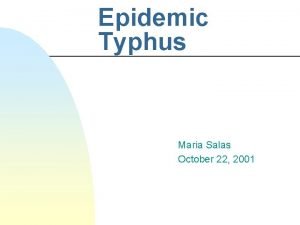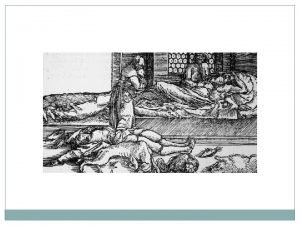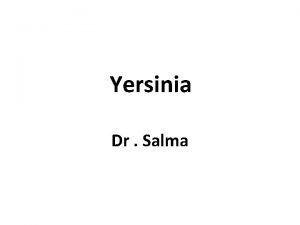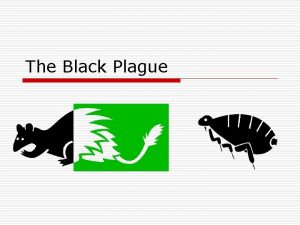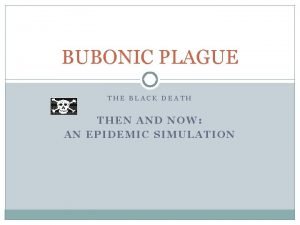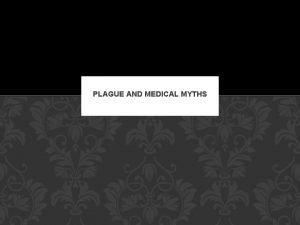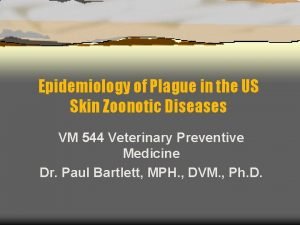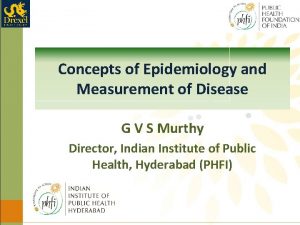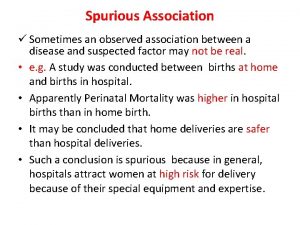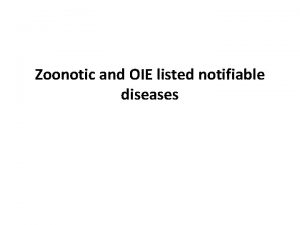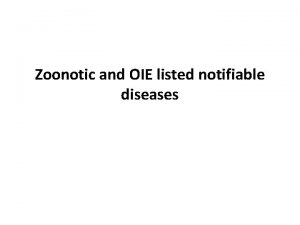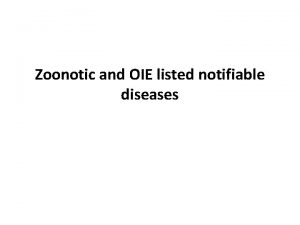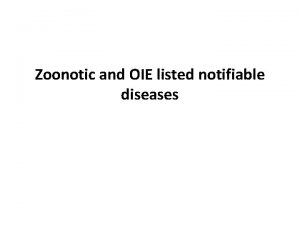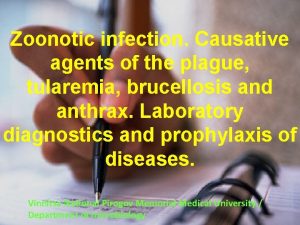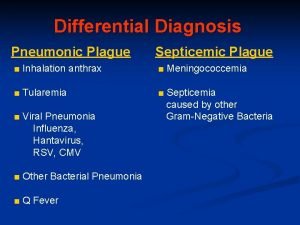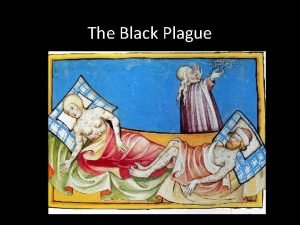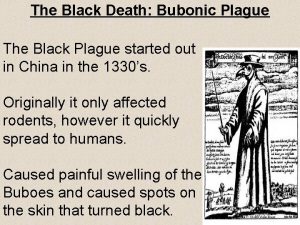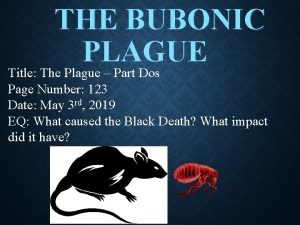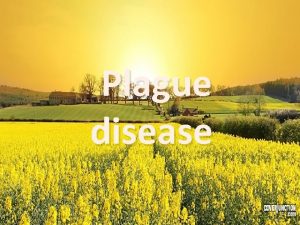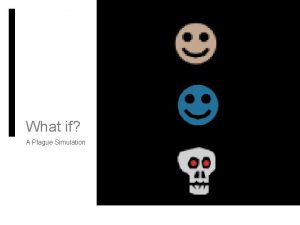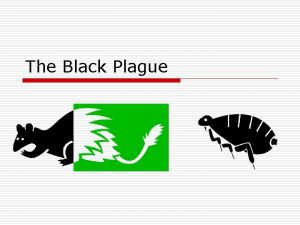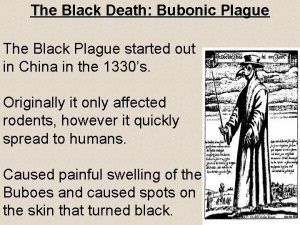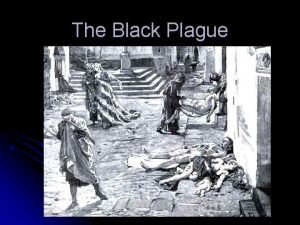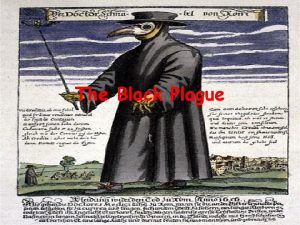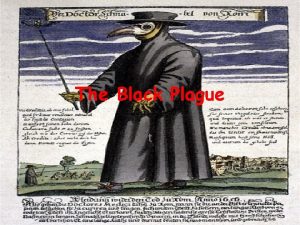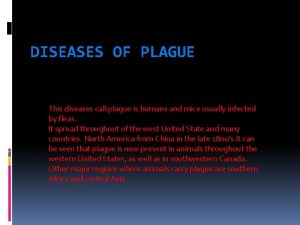Epidemiology of Plague in the US Skin Zoonotic







































- Slides: 39

Epidemiology of Plague in the US Skin Zoonotic Diseases VM 544 Veterinary Preventive Medicine Dr. Paul Bartlett, MPH. , DVM. , Ph. D.

Yersinia pestis (Pasteurella pestis) Ü Remarkable history, called the “Black Death” and “Peste. ” First Pandemic - 542 AD to 602 AD - during the rule of Byzantine Emperor Justinian - the black death killed about 100 million people - destroying the Byzantine Empire. Second Pandemic - 14 th to 16 th Centuries - in central Asia to Europe - it killed hundreds of




Mode of Transmission are domestic and sylvatic cycles of disease. Ü Domestic: Ü There This reservoir is maintained by transmission among domestic rodents through fleas and direct contact. This does not occur in the USA at this time, but the domestic cycle could become established at any time. This cycle/reservoir is important in many developing countries. Ü Sylvatic: This cycle involves transmission of the

Transmission to Humans Ü direct contact with infected animals. hunters can be exposed through sores or cuts on their hands when they clean game. Ü direct respiratory spread from wild rodents is possible. Ü ingestion. Ü through fleas of wild rodents which harbor the


Clinical Syndrome Ü The classic form of the disease is called “Bubonic Plague” The incubation period is 2 to 6 days. A primary lesion occurs at the site of exposure (most usually from a flea) but could also occur through direct contact with a wound or maybe intact skin. The infection then spreads to regional lymph nodes draining the area of the primary lesion.

Clinical Syndrome Ü The bubonic plague can spread to the lungs. Ü Once it spreads to the lungs, the resulting syndrome is called the “secondary pneumonic plague” About 22% of bubonic cases develop secondary pneumonic plague. Once this occurs, respiratory transmission is possible to other animals (or people) - who then develop “primary pneumonic plague”. The overall case fatality rate for pneumonic plague is 18% in the USA.

Primary lesion of bubonic plague

Primary lesion of bubonic plague

Primary lesion of bubonic plague

Primary lesion of bubonic plague

A veterinarian in the Southwest with bubonic plague. Swollen lymph nodes called “buboes”.

Bubonic Plague Primary lesion and buboes

Swollen lymph nodes called “buboes”.


Swollen lymph nodes called “buboes”.


Pneumonic plague – involved mediastinal lymph nodes




Incidence and Disease Surveillance Ü Children are more likely to be infected, but older people have a higher case fatality rate. Ü Males are at higher risk. Ü The disease is cyclic and is now in a down-swing.

Usage of dogs as sentinels of infection: Dogs become seropositive, but rarely develop clinical signs. Serosurveys of dogs are helpful in identifying areas of high plague prevalence in wildlife rodents.

Lots of DVMs work on plague surveillance. Thirsty?


Looking for fleas.

Prairie dog die-off

Prairie dog die-off

Prairie dog die-off

Pets and the Black Death Ü Our unassuming dogs and cats can serve as a bridge for infection between rodents and humans. Dogs and cats bring infective fleas into the home environment. By direct-contact contamination from a severely ill cat. – Cats get sick. Can infect people by direct contact or they can get bubonic plague that becomes pneumonic. Can spread via respiratory route to people. – Dogs usually don’t get sick or transmit.

Prevention and Control 1. 2. 3. 4. 5. 6. 7. 8. Eliminate rodent habitats. Do not feed or encourage rodents to live nearby (squirrels are rodents too. ) Leash dogs and cats in endemic areas. Flea control for dogs and cats (very important fro veterinarians. ) Insect repellent for people, pets. Reporting of rodent die-offs. Client education not to handle sick or dead rodents. Vaccine available fro high risk people. , but it is only effective for less than 6 months.

Plague case report # 1 Ü Evergreen Colorado Veterinarian – 49 yrs old Ü April 15 - Vertigo, fever, chills, malaise, L. node swelling in rt. Axilla. Ü April 16 – Saw physician (Tylenol) Ü April 18 4 x 500 mg tetracycline (self) Ü April 19 Hospitalized (recovered)

Plague Case Report # 1 (continoud) Ü Epi investigation April 10 - Dead rodent contact while jogging April 13 – Bite from cat –Bled cat May 5 (>8192 titer for plague) –Cat’s neighborhood w 3/13 dots had low plague titers

Plague Case Report # 2 Ü California 47 -years old female. Fatality. Ü Primary plague pneumonia from house cat that also caught birds and rodents. Ü Sept 26 – cat ill Ü Sept 28 – Cat acutely ill, coughing, hemoptysis, vet consulted on phone, no action or

Plague Case Report # 2 (continued) Ü Oct 2 – Lady ill with cough, fever, malaise. Ü Oct 3 – Saw physician Dx = urinary tract infection. Ü Oct 4 Hospitalized, died in 5 hours. Ü Aftermath – 180 contacts treated with antibiotics for exposure to

Plague Case Report # 2 (continued) Ü Cat exhumed – cervicle buboes and plague pneumonia. Ü Neighborhood Recent rodent die-off 1/9 dogs positive for plague Dead rodent found across street – culture positive for plague.
 Inscryption ringworm card
Inscryption ringworm card Zoonotic
Zoonotic Zoonotic diseases
Zoonotic diseases Thin skin vs thick skin
Thin skin vs thick skin Thin skin vs thick skin
Thin skin vs thick skin Milady facial massage steps
Milady facial massage steps Dance of death
Dance of death 1870 locust plague
1870 locust plague Plague info
Plague info Exodus 7 11
Exodus 7 11 Plague ppt
Plague ppt Plague doctor 1665
Plague doctor 1665 Stalactite growth yersinia
Stalactite growth yersinia Plague him with flies
Plague him with flies Septicemic plague
Septicemic plague Plague doctor walk rs3
Plague doctor walk rs3 Plague context clues
Plague context clues A litany in time of plague
A litany in time of plague Septicemic plague
Septicemic plague How did the plague make life harder for jews in europe?
How did the plague make life harder for jews in europe? Bubonic plague symptoms
Bubonic plague symptoms Plague athens
Plague athens Flea index
Flea index The black plague
The black plague How did the combination of plague upheaval in the church
How did the combination of plague upheaval in the church Metadata and taxonomy
Metadata and taxonomy Bubonic plague
Bubonic plague Black plague simulation
Black plague simulation Dried toad plague
Dried toad plague Plague
Plague Plague
Plague Black death vocabulary
Black death vocabulary Cbic recertification
Cbic recertification Attack rate calculation
Attack rate calculation Prevalence defination
Prevalence defination Epidemiology definition
Epidemiology definition Attack rate calculation
Attack rate calculation Define epidemiology
Define epidemiology Distribution in epidemiology
Distribution in epidemiology Spurious association
Spurious association
